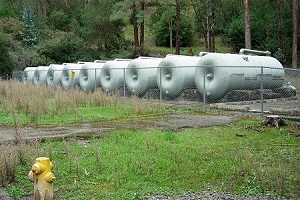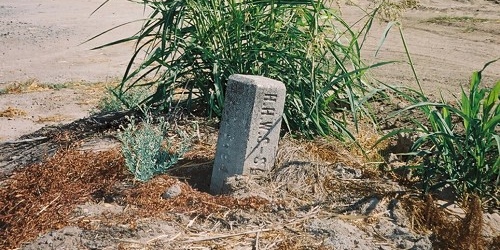 Reservoirs of surface water are rarely as clean as groundwater. To reproduce the natural cleansing of aquifers, reservoir operators must use treatment devices like these antique sand filters at Chabot Reservoir.
Reservoirs of surface water are rarely as clean as groundwater. To reproduce the natural cleansing of aquifers, reservoir operators must use treatment devices like these antique sand filters at Chabot Reservoir.
Wherever settlers arrived in America, their first concern was water. The ideal source of good water was not a babbling brook, although that was good enough for irrigating crops and brewing beer. Surface water varies with the seasons, is readily muddied, and we all know what fish do in it. Best was a steady, cool flow from a protected spring—that is, groundwater. Before wellsprings were a metaphor, they were the very basis of America's first settlements. (March 6–12, 2011 is National Groundwater Awareness Week to help remind us of these historic truths.)
As settlements grew into towns that in turn became cities, larger water sources could be engineered. Ancient Rome owed its prominence to its abundant water supply, brought by aqueduct from Apennine Mountain springs. Mighty New York captured the clean Catskill rains in a network of reservoirs that fed their water by gravity to Manhattan. San Francisco raided a national park in the Sierra Nevada, a hundred miles away, for its water supply. Now every Bay Area river has been harnessed for civic purposes. But groundwater is still a major player here, if a largely invisible one.
Groundwater wells were part of every household in the early days, but the typical shallow aquifer, or water-bearing zone, is not suited for hard use. It's too closely connected to the surface; indeed every permanent stream can be thought of as living groundwater, where erosion cuts into the top of the aquifer. Once too many wells tap the surface aquifer, the level of water underground—the water table—is depressed. Eventually the streams are affected, and the costs of digging ever deeper bring an end to the household well.

